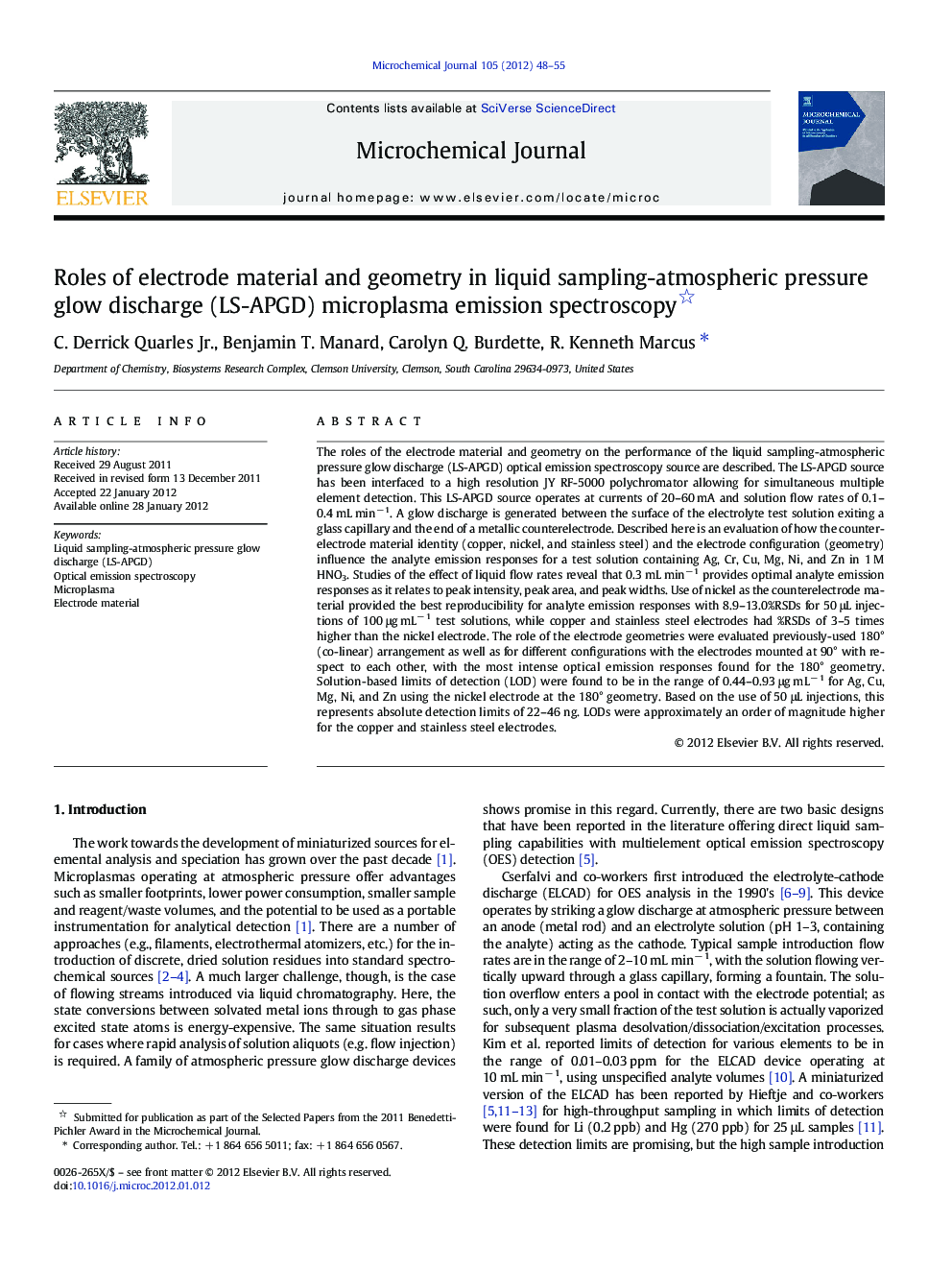| کد مقاله | کد نشریه | سال انتشار | مقاله انگلیسی | نسخه تمام متن |
|---|---|---|---|---|
| 1227891 | 1494889 | 2012 | 8 صفحه PDF | دانلود رایگان |

The roles of the electrode material and geometry on the performance of the liquid sampling-atmospheric pressure glow discharge (LS-APGD) optical emission spectroscopy source are described. The LS-APGD source has been interfaced to a high resolution JY RF-5000 polychromator allowing for simultaneous multiple element detection. This LS-APGD source operates at currents of 20–60 mA and solution flow rates of 0.1–0.4 mL min− 1. A glow discharge is generated between the surface of the electrolyte test solution exiting a glass capillary and the end of a metallic counterelectrode. Described here is an evaluation of how the counterelectrode material identity (copper, nickel, and stainless steel) and the electrode configuration (geometry) influence the analyte emission responses for a test solution containing Ag, Cr, Cu, Mg, Ni, and Zn in 1 M HNO3. Studies of the effect of liquid flow rates reveal that 0.3 mL min− 1 provides optimal analyte emission responses as it relates to peak intensity, peak area, and peak widths. Use of nickel as the counterelectrode material provided the best reproducibility for analyte emission responses with 8.9–13.0%RSDs for 50 μL injections of 100 μg mL− 1 test solutions, while copper and stainless steel electrodes had %RSDs of 3–5 times higher than the nickel electrode. The role of the electrode geometries were evaluated previously-used 180° (co-linear) arrangement as well as for different configurations with the electrodes mounted at 90° with respect to each other, with the most intense optical emission responses found for the 180° geometry. Solution-based limits of detection (LOD) were found to be in the range of 0.44–0.93 μg mL− 1 for Ag, Cu, Mg, Ni, and Zn using the nickel electrode at the 180° geometry. Based on the use of 50 μL injections, this represents absolute detection limits of 22–46 ng. LODs were approximately an order of magnitude higher for the copper and stainless steel electrodes.
► Key operation parameters of the LS-APGD-OES microplasma source are studied.
► Electrode powering schemes effect emission and temporal responses of analytes.
► Ni counterelectrodes produce superior performance in all aspects of OES analysis.
► Collinear electrodes show better analytical performance than a 90° arrangement.
Journal: Microchemical Journal - Volume 105, November 2012, Pages 48–55